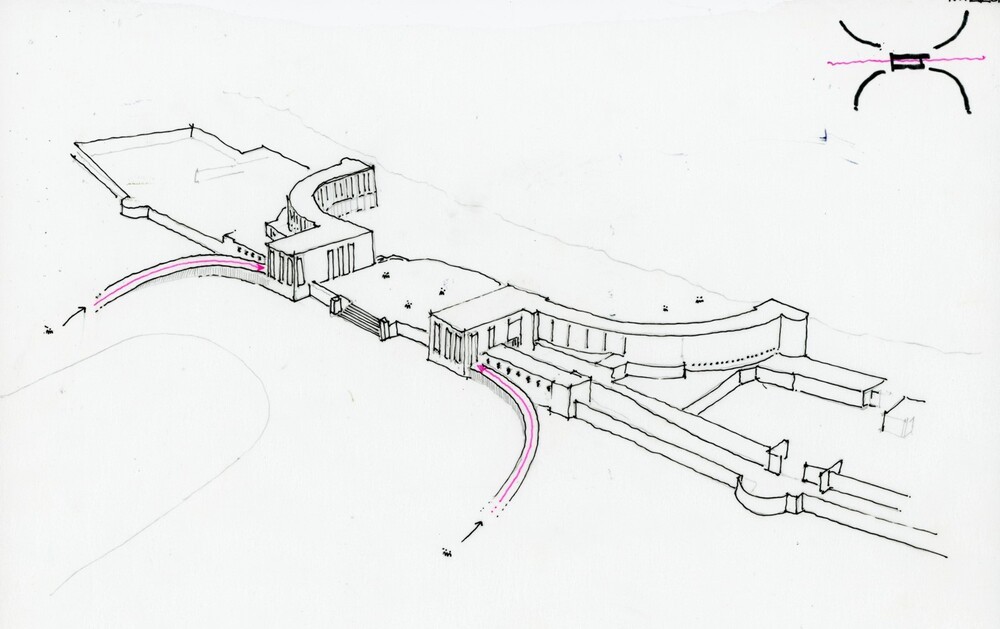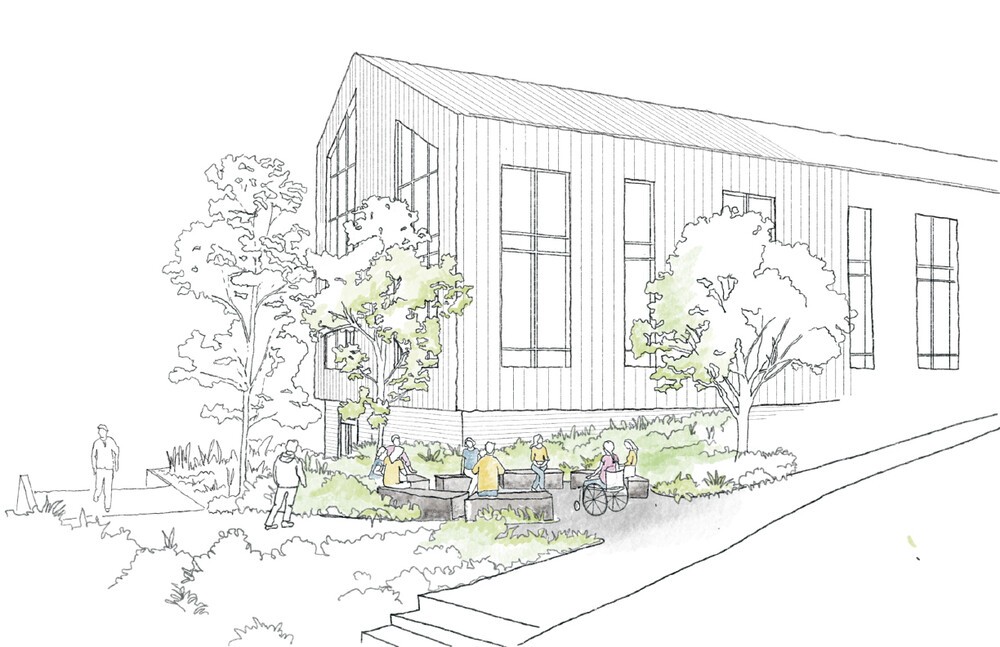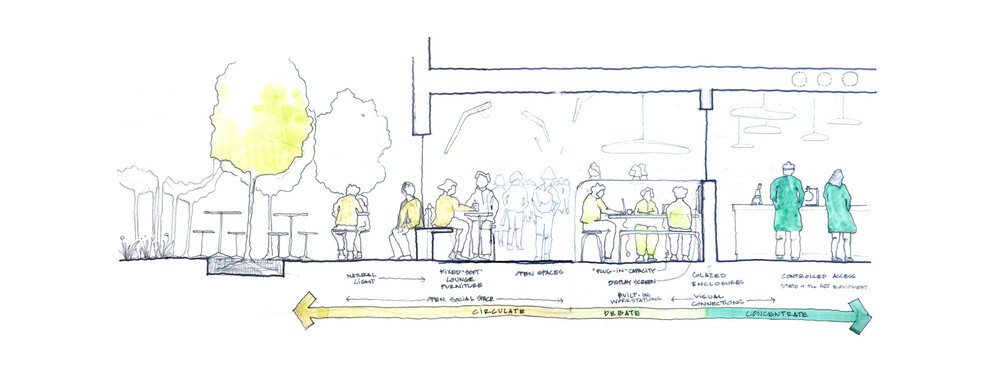Questions For A Designer: Ana Cubillos
A diverse array of backgrounds, experiences, and worldviews come together to shape Marvel’s designs across public and private spaces. This series aims to offer insight on the colleagues and teammates that are essential to Marvel’s success.
What brought you to Marvel?
I grew up in an architect’s family. Both my parents are architects and I was always in that world. At McGill, I studied finance, but architecture lured me back in. After graduating I went to the UVA School of Architecture for my master’s. We had great professors, a lot of international professors that offered many perspectives on architecture and design. We spent a lot of time focusing on urban areas, which set a tone for the type of practice I was looking for—a multidisciplinary firm that worked to integrate architecture with landscape and urbanism. One of the things that program lacked was a focus on the technical side of building and construction, which is another reason why I ended up at Marvel. Marvel is more hands-on throughout the building process and is actively engaged with the agencies and people that are making things happen across the city.
 Ana's sketch of the Orchard Beach Pavilion helped identify possible accessible entrances.
Ana's sketch of the Orchard Beach Pavilion helped identify possible accessible entrances.What projects have you worked on at Marvel?
My first project was the renovation of the Orchard Beach Pavilion, which involved the adaptive reuse of the iconic 1930’s structure, increasing accessibility and restoring the site to its former stature. It’s fascinating working with the preservation consultants and engaging with the site’s massive scope. It all makes for beautiful drawings and building on someone else’s work from decades ago is really exciting. Adaptive reuse was one of the things that attracted me to Marvel and we’ve been invested in these projects like Orchard Beach and St. Ann’s Warehouse which are so challenging and rewarding. And now, I’m working on Masters IEC. It’s the second project we’ve done with the school, and it’s a ground-up building, but has to fit within the current campus. I’ve been working on that for the last year and it is the opposite of Orchard Beach in terms of being a ground-up project. We’ve seen this project from concept SD to CA now, so I’m very excited to see a project through construction. Being early on in my career, I really wanted to see something ground-up, to get a better sense for the different trades, coordination, and what it takes to build a building. I’ve been lucky to have both experiences and hope to get more experience with adaptive reuse in the future.

What opportunities are there for growth and exploration as a designer at Marvel?
The management team has kept a running dialogue with me about how to strategize for my career long-term and put me on projects that interest me and benefit my trajectory as an architect. It was a very explicit move from Orchard Beach to Masters IEC with the help and ears of the staffing team in order to give me experience with a ground-up project. Marvel has been very conducive to providing opportunities to learn about different types of projects. Something else that’s been fun in terms of how I like to work is that the office and projects I’ve been on have been responsive and excited to work in a lot of media, like sketching, drawing, which have been welcome tools and valued on these projects. We use these types of materials for pursuits and visualization, which sometimes offers more freedom and flexibility than a rendering can.
 Hand drawn images and sketches are instrumental for Marvel's iterative design process.
Hand drawn images and sketches are instrumental for Marvel's iterative design process.What is it like working with teams across Marvel’s three office locations (New York, NY, San Juan, PR, and Richmond, VA)?
It’s refreshing to know that no experience or project will ever be the same, in terms of who you’ll be working with. There’s no set formula and I appreciate that you’re given the opportunity to work and learn from so many different leaders across all disciplines. You don’t feel like you’re siloed on a certain part of the team and can utilize the breadth of knowledge that the Partners, Directors, and Associates have.
How would you describe the firm culture?
It’s a very friendly atmosphere and you’ll be given a lot of freedom to figure things out. You take on as much as you want and can, so it’s a very exciting place to grow. You can design your own rhythm and people are very receptive to helping create your own path. We’ve also been operating flexibly, with the option to come into the office or work remotely.
What is your favorite Marvel project that you didn’t work on, and why?
I’m a big fan of St. Ann’s Warehouse. The site is spectacular, being in the shadow of the Brooklyn Bridge, and the end result is pretty incredible, creating a theater that is flexible, while also integrating it with the surrounding attractions. It seems like it was a very rewarding and enriching project in many different ways. If I had a time machine, I would have loved to be on that project a couple years ago.
What are you most looking forward to in 2022?
I am very excited to see my first project come to life. I’m also looking forward to time away from my computer—which I’ve planned to get on a camping trip to California!
 A sketch for Masters IEC helps define the flow of spaces, from open social spaces to controlled access spaces like workshops and classrooms.
A sketch for Masters IEC helps define the flow of spaces, from open social spaces to controlled access spaces like workshops and classrooms.